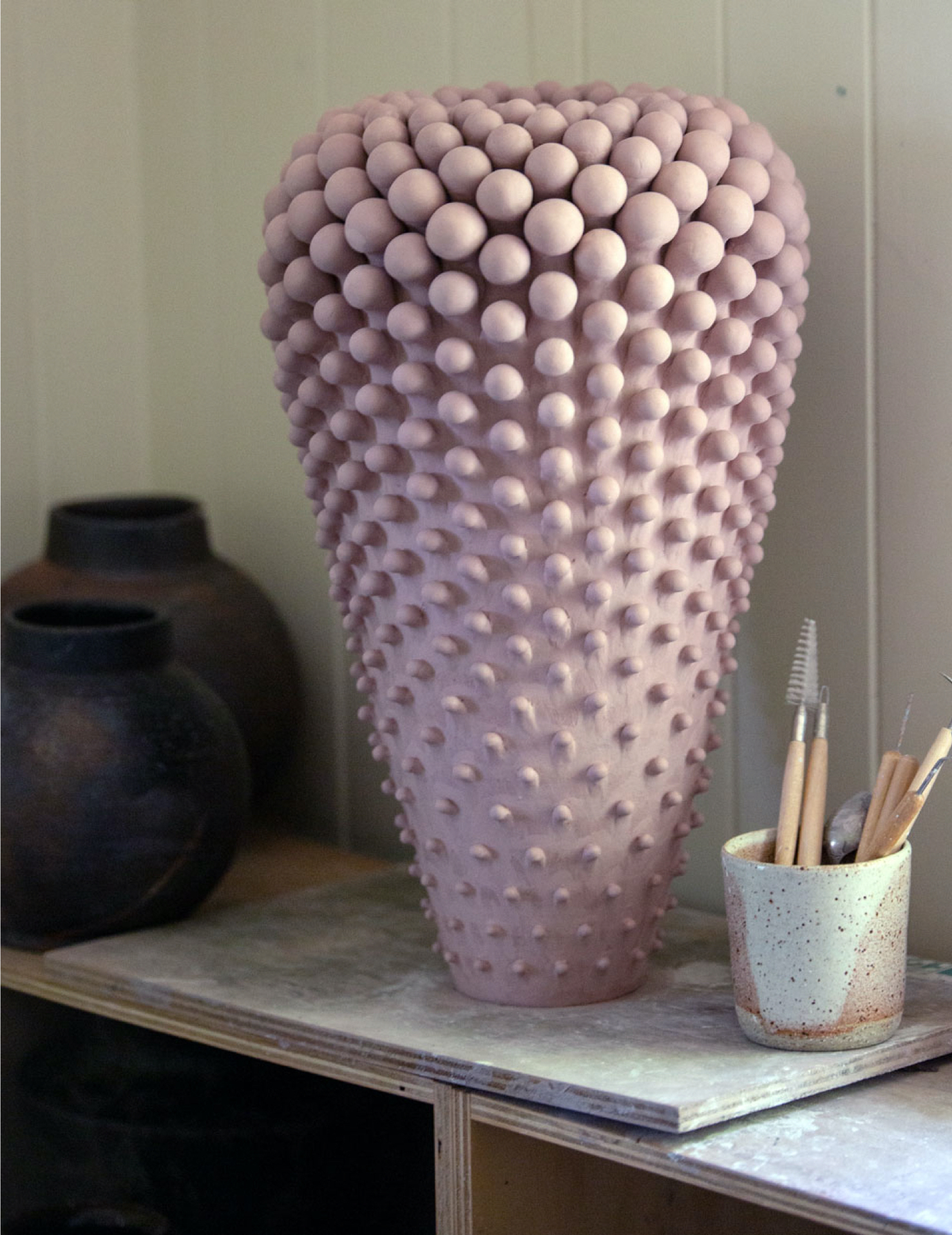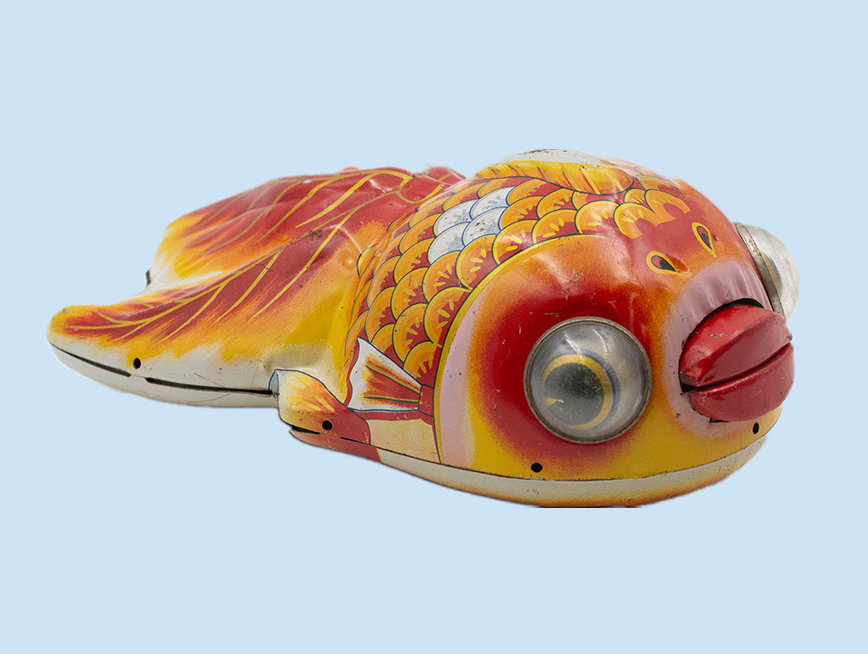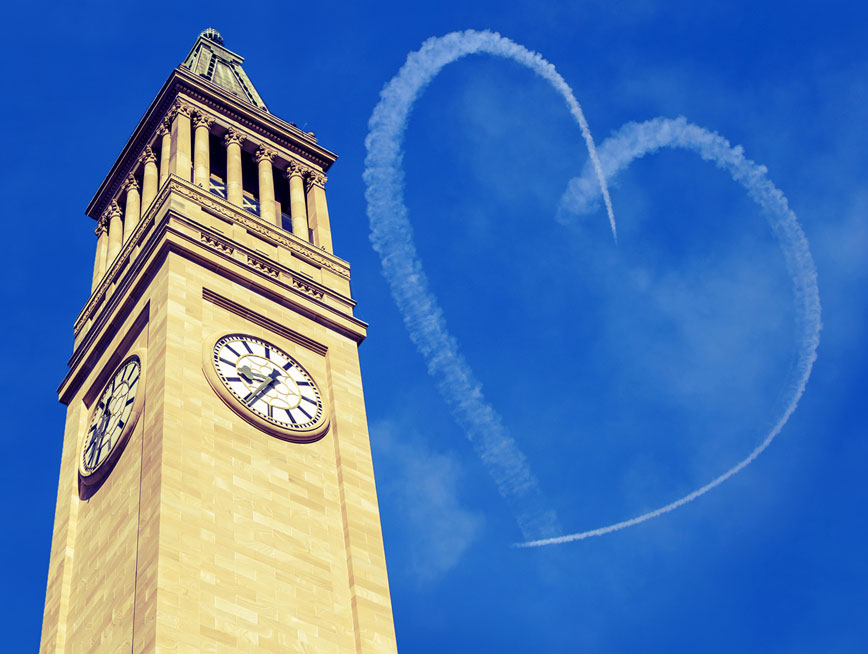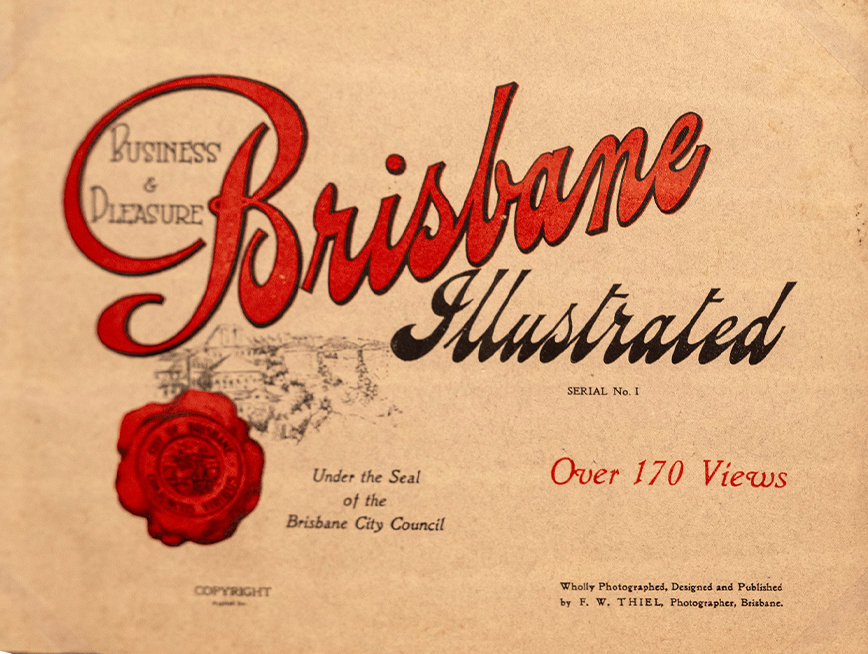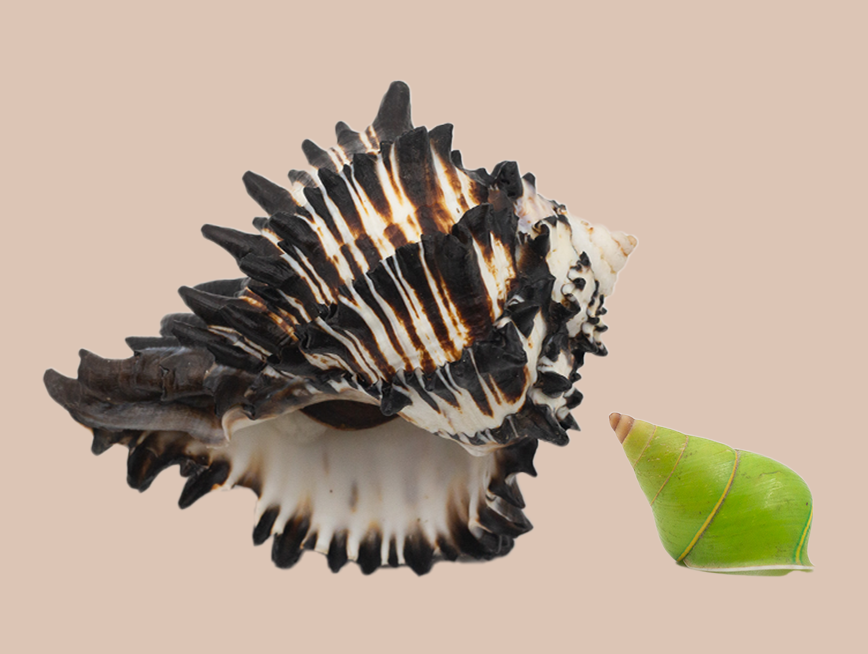Nicolette Johnson is a ceramic artist whose work explores symmetry, botanical motifs and the importance of the artefact. Born in London and now based in Brisbane, Nicolette began studying ceramics in 2015, and comes from a background in photographic art and social documentary. She continues her practice-led exploration into the functional and sculptural ceramic vessels, handmaking and firing each of her works in her Brisbane home studio. Working in stoneware, she employs wheel-throwing, coiling and sculpting techniques, and applies a modern aesthetic to re-imagined ancient forms.
Nicolette’s vessels draw on ceramic tradition and techniques spanning millennia. Their forms seamlessly merge the organic and the handmade, echoing the symmetry of nature. In the imagination, they become petals of a flowering blossom, scales of a lizard, a bird’s plumage, or even an ancient archaeological find. Each vessel emerges from the kiln with a unique character. As Nicolette lets her thoughts wander during the making process, she conjures up stories about the vessel and bestows an aura around it, giving the work its own new mythology.
Nicolette’s work is included in the permanent collections of the National Gallery of Victoria and Museum of Brisbane, and her work has been exhibited in Salone del Mobile in Milan, and the National Gallery of Victoria International in Melbourne.
As a ceramicist, your process seems to be ever-evolving, even when working with a single stoneware vessel. Is this change something you worry about or embrace?
Yes, I love when this happens. Often, the change is subtle and it’s likely that you’d only notice it if you studied a piece very closely. But yes, my techniques tend to change from the top to the bottom of the pot, and certainly from piece to piece. Pattern repetition is a strong motif in my work, and it would be impossible for my human hands to replicate a shape exactly every time. So, the shapes tend to morph and change slightly as they move down the pot. I’m also constantly problem-solving and learning better or faster ways to produce the same shape, and this will inherently change how my pots look over time. I like to think this creates markers throughout my body of work.
Most of your vessels show a contrast in the perfection and symmetry of the forms themselves, with the imperfection of the glazed surface. This lack of control in the final part of the making process must be a thrill and a challenge all in one?
Glazing definitely is a beast all of its own! Often there’s an element of chance in glaze firing, as you really can’t know what exactly is happening inside the kiln until you open it up. I really enjoy the process of wood firing for this reason, but unfortunately I have limited access to it. I love when ceramic surfaces have an organic quality to them, as opposed to a slick, mass-produced feel. And this is why I’ve used oxide washes with my glazes, which can result in metallic, varied surfaces.
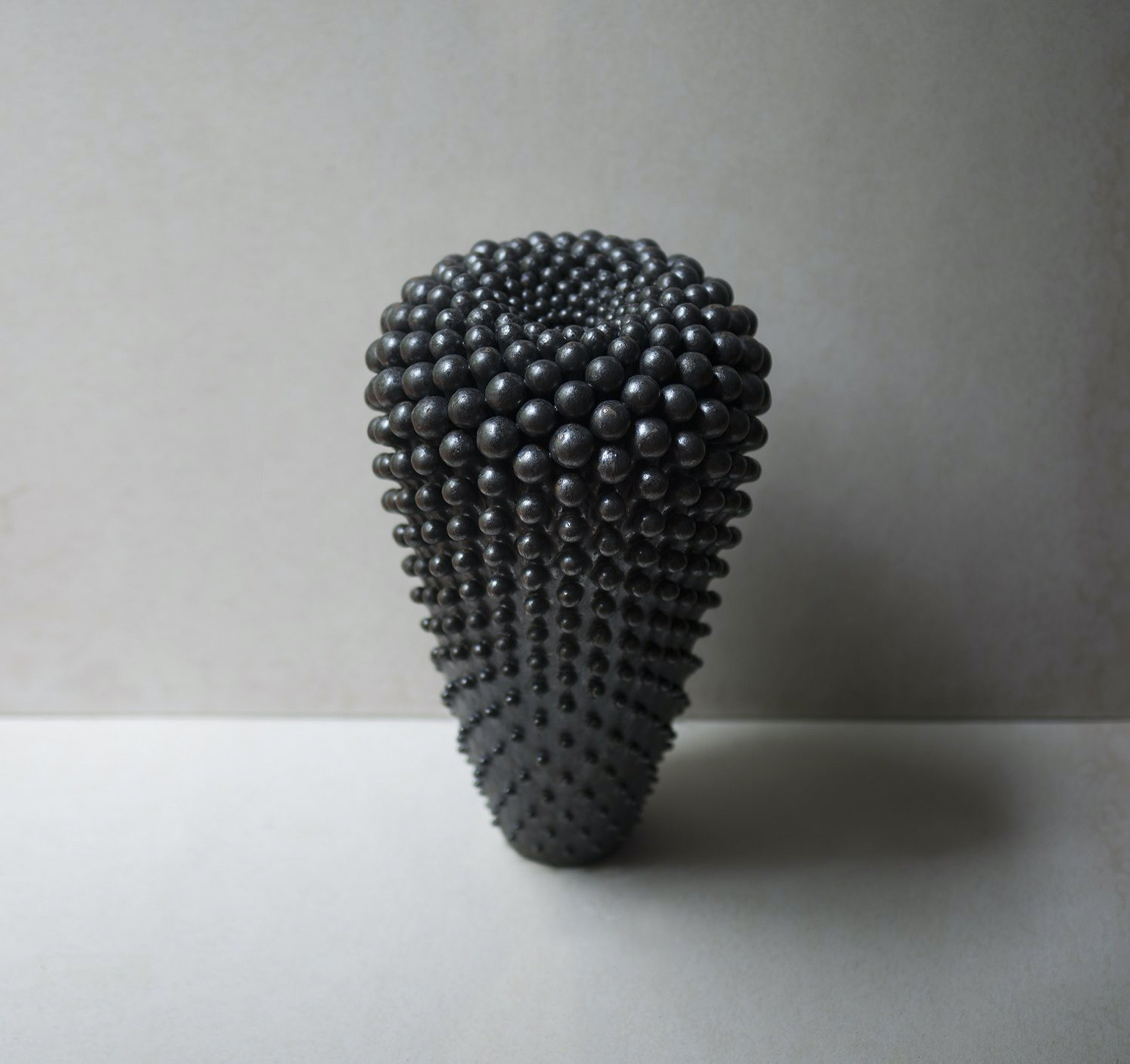
As pottery is one of the oldest art forms, practised all over the world, you have an incredible resource of traditions and techniques to draw from. Where else do you source inspiration?
I do find quite a lot of inspiration in ancient decorative pottery. Artisans before me have already done what I do now, and I like the challenge of ‘updating’ or modernising a piece of pottery thousands of years old. On the other hand, some motifs in my work are drawn from symmetry and geometry found in the natural world, stemming from ideas like fractals and the golden ratio. Each of my pieces also tends to be informed by the previous piece in some way.

Alongside your ceramics practice, you also have a background in photography. I’m curious about which came first for you and how they’ve influenced each other.
I studied photography for four years at Queensland College of Art, graduating in 2011. After that, I was a freelance photographer, among many other retail jobs! I love photography, but I was finding myself always feeling nervous and anxious before my jobs, and it seemed to be getting worse the longer I worked in that field. I thought taking pottery classes might help with my anxiety. And it really did, so much so that I felt I would much rather be doing pottery than photography! I started learning pottery in 2015, and after a couple of years of practising, I started making pottery full-time in 2017. I still use photography every day, and for me, photographing my work is an important process. It allows me to understand how the piece looks in certain light, and how it relates to the pieces around it. And the photographs are an important record of the time and effort I put into each piece I make. Spending time photographing my own work acts as a kind of bookend to the making process.
What does open source mean to you, as an artist?
The pottery community in Brisbane is collaborative, encouraging and supportive. Potters are a really open and honest bunch of people, and as an emerging artist I feel so much camaraderie with my peers. Established artists and experienced potters in Brisbane are also incredibly kind and forthcoming with their knowledge. I never feel as though I’m in competition with any one of my fellow potters. Instead, I always feel uplifted and motivated to explore my craft further. In addition to this, the wonderful art institutions in this city regularly seek out and give platforms to young and emerging artists who may be still finding their voice within their work. And I think this support is so vital and so appreciated.
